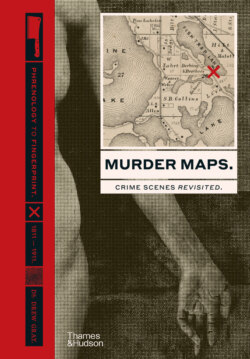Читать книгу Murder Maps - Drew Gray - Страница 13
На сайте Литреса книга снята с продажи.
Оглавление12
In 1893, an Austrian jurist and magistrate named Hans Gross (1847–1915) published Criminal Investigation: A Practical Handbook for Magistrates, Police Officers and Lawyers. One of the founding fathers of criminal profiling, Gross, together with French criminologist Edmond Locard (1877–1966), was a pioneer in crime scene investigation (CSI). Gross set out three essential principles for CSI:
a) The hermetic isolation of the crime scene.b) Its ‘systematic excavation for material evidence’.c) The establishment of a system for ensuring that all evidence was carefully logged, retained and kept intact on its journeythrough the criminal justice system.
Gross was adamant that one person – the investigating officer (IO) – should be in charge of any crime scene and take responsibility for it. He had to be an observant and persistent person. ‘He will examine little pieces of paper that have been thrown away,’ wrote Gross. ‘Everything will afford an opportunity for drawing conclusions and explaining what must have previously taken place.’ He warned against holding preconceptions and taking things at face value, which he considered were rooted in human instinct and culture. We tend to see what we expect to see, and a good IO had to acknowledge and transcend this trait to see beyond the obvious. One of Gross’s innovations was the use of the microscope, which allowed investigators to examine particles of dust invisible to the naked eye. Locard built on Gross’s initial observation that dust retained all manner of information that could help identify criminals and explain exactly what had happened at the scene of the crime. Locard also took inspiration from the greatest fictional detective of the late 19th century, Arthur Conan Doyle’s (1859–1930) Sherlock Holmes. The exploits of the Baker Street private detective captivated late Victorian readers and did much to establish a positive image of
Above. crime scene photographs from alphonse bertillon’s album of paris crime scenes (1901–08). having developed the use of photography to capture ‘mug shots’ of career criminals, bertillon later used forensic photography to preserve the crime scene
and thus aid detection.
18891892189218921893189418941895
Pauline Tarnowsky, the first female criminologist, publishes an anthro-pometric study of female criminals. Juan Vucetich establishes the first method of recording individualsfingerprints on file. In Argentina fingerprints are
’ used to convict Francisca Rojas of murdering her sons. Francis Galt
on outlines a statistical model of fingerprint analysis.
F
ounding father of criminal profiling Hans Gross formalizes the science of criminolo. Alphonse Bertillon testifies on
the authorship of a document during the Dreyfus Affair. Jean Pierre Mégnin
publishes his rwork on insects in cadav
evolutionary er Ink analysis identifies forged
s. documents in the trial of James Reavis.
C.
B.
A.
INTRODUCTION.
